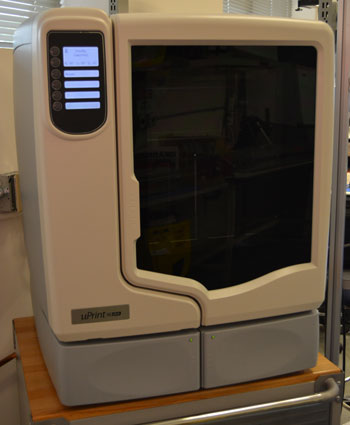In another post, we shared 3 ways 3D printing is reshaping manufacturing. For this post, we took a look one of the most common uses for 3D printing: prototyping. According to a recent survey by PwC, 34% of surveyed companies utilize 3D printing for prototyping. Keep reading to learn more and watch a time-lapsed video of an actual prototype being printed!
 What is 3D Printing for Prototyping?
What is 3D Printing for Prototyping?
3D printing—also known as additive manufacturing—is the process of converting a digital design into a physical object. The digital file is first exported to a print-ready format (usually STL). Then, a slicer converts the 3D data to 2D slices that are sent to the printer. Finally the printer creates the physical object by “printing” material (usually a flexible plastic) layer by layer.
The benefits of 3D printing for prototyping (also known as rapid prototyping) are many. Instead of the weeks it traditionally takes to manufacture a sample part, 3D printing can churn out a prototype in a matter of hours or days, depending on the size of the piece and the capabilities of the printer.
Because of the ease and speed of printing, it is also possible to print multiple prototypes of the same part at low cost. This allows engineers to flexibly and cost-effectively test or demonstrate multiple prototypes to a customer.
VIDEO: Watch a Prototype Being Printed Start to Finish!
Engineers at SICK also use 3D printing for prototyping. The example in the video below shows the process of printing one such prototype from start to finish. In this case, the printed piece is a prototype of a sensor with custom casing for easy installation on a customer’s application.
The prototype, which printed in about an hour, is one of several options that could be printed and used in a live demonstration, letting the customer see how a range of customization options could fit their needs—in “real life” rather than just in digital renderings.
Watch our 3-minute time-lapsed video of the prototype from concept to creation!
![]()





